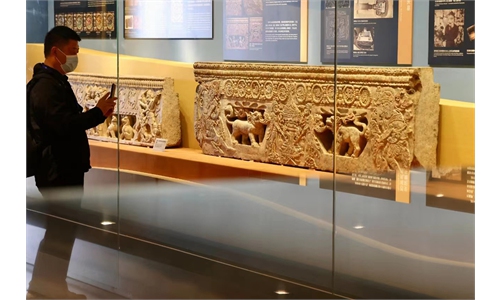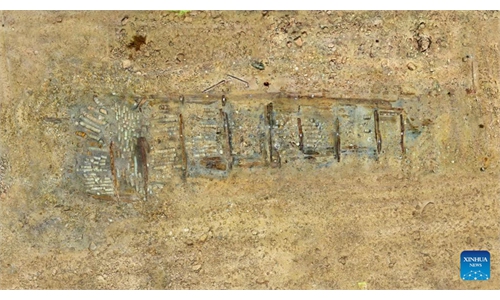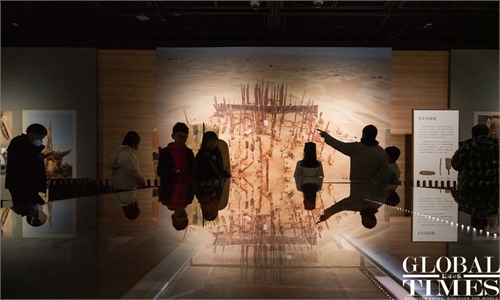Photos show the foundation of the tower at the Dongta Temple site in Jiaxing, Zhejiang province Photo: ZTV News and Sina Weibo
An archaeological symposium on the historical heritage of the Dongta Temple site in Jiaxing, East China's Zhejiang Province was recently held in the city. The academic gathering revealed the latest research results, explaining why the site's tower was able to stand for more than 1,000 years.Located in the old town of Jiaxing, the Dongta Temple site was built during the Liang Dynasty (502-557). A tower was added during the Sui Dynasty (581-618), but was demolished in the 1960s.
Although the tower was removed, its foundations are intact. At the latest symposium, archaeologists revealed that the tower's base was rebuilt by engineers of the Northern Song Dynasty (960-1127) using materials such as bricks and wood.
The techniques used were extremely complex. A large, deep pit was dug first, and wood piles were placed at the bottom, with soil then added layer by layer upon a delicately designed wooden structure. It was also discovered that the foundations were braced by several layers of wooden frames.
The excavation work on the tower's base was carried out in 2023. "Such a well-designed structure is a pivotal reason why the tower was able to stand for more than 1,000 years," archaeologist Wang Meng told the Global Times.
Wang also told the Global Times that the site shows "ancient Chinese people's wisdom in civil engineering." He added that such architectural ingenuity was necessary as the soil in Zhejiang province is soft and wet.
Zhou Kefan, another archaeologist who participated in the project, said that including the base area, a total of 900 square meters of the site has been excavated. Some ancient coins were unearthed, which experts said were made during the Northern Song dynasty.
Prior to the 2023 project, an excavation in 1968 found 28 relics buried behind the foundations.



